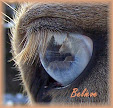Which ingredients are harmful?
First, let's determine if any of the ingredients in commercial flysprays are harmful. This in and of itself can be confusing depending on who you ask. According to the National Pesticide Information Center* the following pesticides and additives pose no confirmed threat to humans or mammals. However the NPIC states that these chemicals do pose a danger to the eco-system around us.
The short version: Risks of permethrin are either "undetermined" or minimal, according to the National Pesticide Information Center. The bigger issue with this chemical is its effect on the environment. While there is no evidence that it hurts mammals (though some studies have shown liver enlargement in dogs when taken internally) it is deadly to fish, amphibians, as well as many beneficial insects including honey bees.
Incorrectly applied or applied in too strong of a solution, permethrin can irritate skin, nasal passages and eyes.
The long version: http://npic.orst.edu/factsheets/PermGen.html
PYRETHRINS
The short version: Essentially the same level of risk as permethrin, except that it can cause problems if inhaled. Nasal passages can become inflamed and it is suggested that people with asthma should not expose themselves to the vapors. I would say this would be a good rule of thumb for horses with heaves or any type of COPD.
The long version: http://npic.orst.edu/factsheets/pyrethrins.pdf
PIPERONYL BUTOXIDE
The short version: This manmade chemical is not an insecticide by itself. It's purpose is to enhance the effectiveness of the other ingredients. Nuff said? If this ingredient is listed on your flyspray label, expect it to work better than a product that doesn't have it. You can also expect that the adverse properties will be enhanced as well.
The long version: http://npic.orst.edu/factsheets/pbogen.pdf

*"NPIC provides objective, science-based information about pesticides and pesticide-related topics to enable people to make informed decisions about pesticides and their use. NPIC is a cooperative agreement between Oregon State University and the U.S. Environmental Protection Agency."
What you choose to expose yourself or your horses to is your business. Chances are, if you use these chemicals responsibly and correctly, you'll probably be ok.
However, if you'd rather not expose yourself and animals to potential hazards and/or are concerned about the eco-system around you, then you will want to consider alternative solutions. I will discuss several in my next blog entry.
Looking for an effective essential oil based bug balm? CLICK HERE
Happy Trails!
Bella







0 comments: